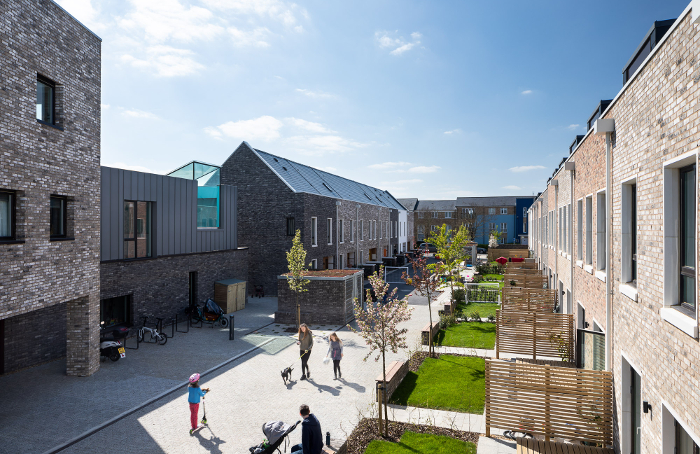When a housing scheme successfully delivers high quality results, sells the majority of its units before planning permission is granted, is loved by residents and appears to provide exactly what the occupants asked for, it prompts the question: “why would you do it any other way?”
This is how Stephen Hill sums up his attitude to collaborative design work. Specialist Expert at the Design Council and Chair of the UK Cohousing Network, Hill has a long history of collaborative design projects with clients and communities. He will be the keynote speaker at next week’s online conference RIBA Guerrilla Tactics: Stop, Collaborate and Listen.
Hill himself prefers the term “co-production”. He cites Marmalade Lane, an award-winning co-housing scheme in Cambridge, as a great example of a successful co-production. Key to the success of Marmalade Lane was its novel partnership between a private developer and a cohousing group.
The site was owned by the city council, who wanted to support Cambridge Cohousing, a community group that had been looking for a suitable site for years. The developer’s involvement was seen by the council as bringing certainty to the project and the collaboration was termed ‘enabled co-housing’.
Meredith Bowles is Director of Mole Architects, the practice that led Marmalade Lane’s design.
“The emotional investment and commitment you receive from a co-housing group makes them a very satisfying and enjoyable client to work with,” Bowles points out. “The residents are willing to make things work even if they are not ideal.”
Mole were challenged to meet a range of different needs voiced by different individuals and families.
They designed three essential house types and an apartment; but within each house type, the future residents could choose customisable options, finishes and grades of fit-out to fit their needs and budgets. Spaces between rows were designed to be car free and child friendly. Mole creatively broke the rules by having the backs of one terrace facing the frontages of another.
Three-quarters of the development of 42 dwellings was sold ‘off plan’ before planning permission had been achieved.
“A big plus for developers in codesign is to secure off-plan sales,” Bowles points out. “Typically, selling 50% off plan would be considered remarkable for a development.”
This considerably de-risks the developer’s investment, directly addressing one of their biggest concerns.

Co-designing with a large group of committed individuals, who may have differing opinions, does carry risks of delays and setbacks.
“These are risks to anticipate,” Bowles admits. “But most groups are reassuringly well managed, and will have sensible spokespeople. You need clear decisions from the group that are iterative, and should encourage people not to go back on them.”
That is not to say that co-production does not require extra time and effort.
“Without the replication of a standard house type, decision making is more complex, and there will probably be more meetings. Your fee needs to reflect that,” Bowles warns.
“But the process makes it a far more interesting and richer experience than designing with nobody there but planners attempting to second-guess the wants of potential future residents, or the QS discussing costs.”
For Stephen Hill, empathy is a key part of the design process.
“Ask yourself, ‘if this were me, what would I expect?’” he advises. “These projects remind us that we are citizens as much as architects.”
Too often, the client is not assisted in getting the brief right: advising the client is an essential part of being an architect, Hill emphasises.
But on projects such as Marmalade Lane, the results speak for themselves. The challenge facing all those who believe in the potential of citizen-led housing is how to bring projects such as this into the mainstream; they need to be more than award-winning exceptions.
Stephen Hill will be the keynote speaker at the RIBA’s online conference Guerrilla Tactics 2021: Stop, Collaborate and Listen, which takes place between 9 and 11 November 2021. Tickets are available now.
Thanks to Stephen Hill, Specialist Expert at the Design Council; Meredith Bowles, Director, Mole Architects.
Text by Neal Morris. This is a Professional Feature edited by the RIBA Practice team. Send us your feedback and ideas
RIBA Core Curriculum topic: Architecture for social purpose.
As part of the flexible RIBA CPD programme, professional features count as microlearning. See further information on the updated RIBA CPD core curriculum and on fulfilling your CPD requirements as an RIBA Chartered Member
First published Thursday 4 November 2021









